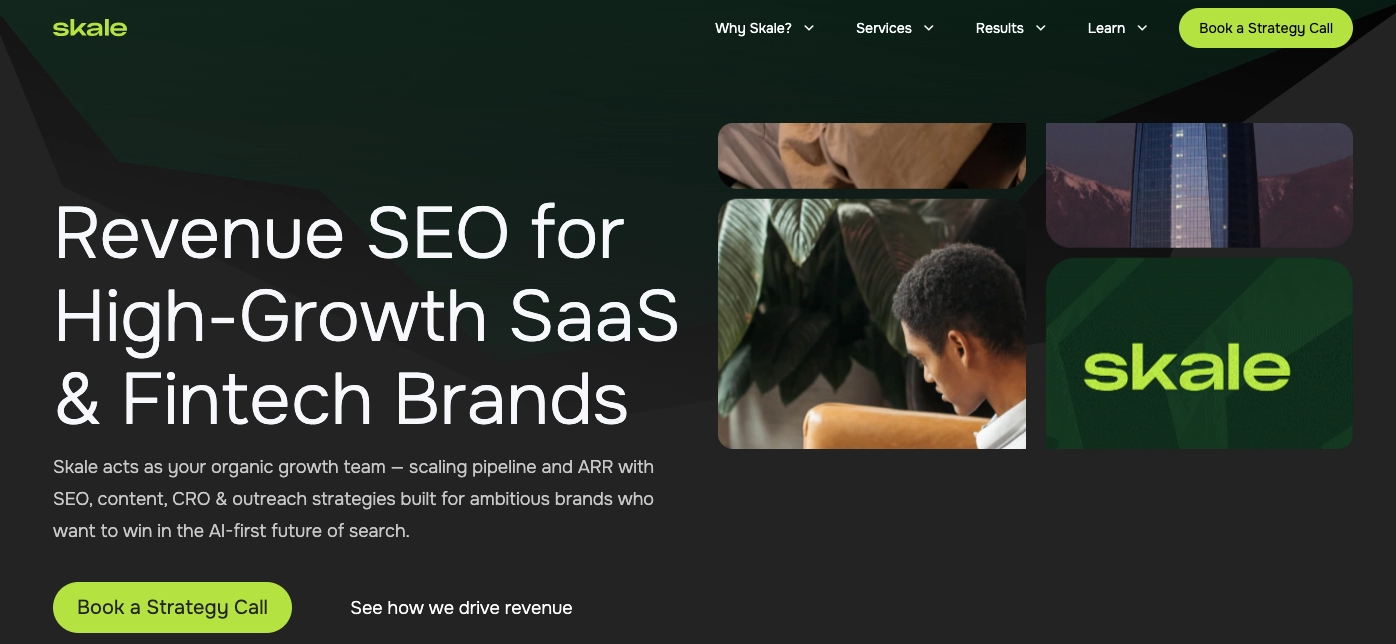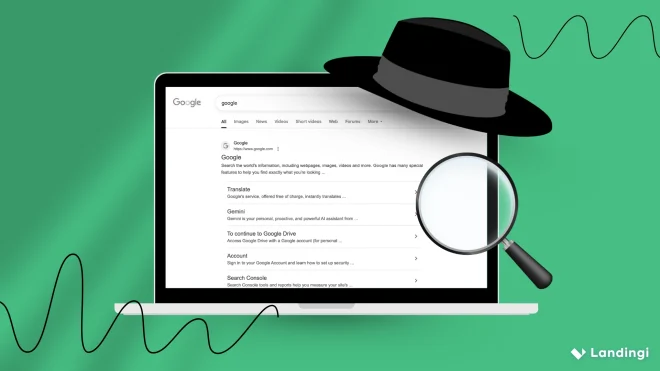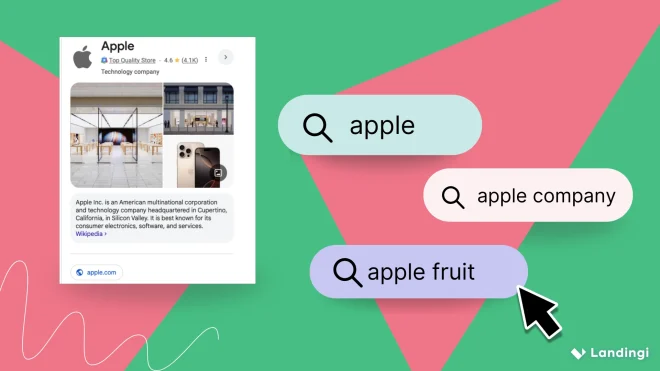Technical SEO is what makes your website visible, crawlable, and able to rank. It’s the foundation that ensures your pages are properly loaded, understood, and prioritized by search engines.
In digital marketing, technical SEO is often underestimated—until the traffic drops. When pages disappear from Google, load too slowly on mobile, or show up with broken elements, it usually comes down to technical missteps. This area includes everything from website speed, structured data, and secure protocols, to how your site architecture, internal links, and indexing settings are configured.
According to recent studies by Ahrefs, only about 33% of websites meet Google’s Core Web Vitals standards, which means most pages are slower or less stable than they should be. Fixing problems like these improves how search engines read your site and how users experience it. That leads to higher rankings, better engagement, and fewer people bouncing because a page took too long to load.
This article explains what technical SEO includes, why it’s an essential part of your strategy in 2025, and how to improve it with clear, focused steps. If you want to understand how things like page speed, mobile indexing, and structured data affect your traffic, you’ll find all the key points below.

What Is Technical SEO?
Technical SEO is the practice of optimizing your website’s technical elements to help search engines crawl, index, and rank your content efficiently — while improving user experience at every step. It’s not about writing better content; it’s about making sure that content can be found, loaded, understood, and trusted by both users and bots.
At its core, technical SEO focuses on the website’s technical aspects that directly impact your search traffic and higher search engine rankings. That includes how your site structure is built, how fast your website speed is, how well your site performs on mobile devices, and how you handle things like structured data, internal links, and secure websites (HTTPS).
The key goals of technical SEO are:
- Ensure smooth crawling and indexing of all relevant pages
- Help search engines index the right version of your content (especially across multiple pages or multiple languages)
- Strengthen your site architecture, so every important page is just a few clicks away
- Detect and fix problems like broken internal links, redirect loops, or misuse of the noindex tag
- Enhance user experience through faster load times and mobile-friendliness
- Improve technical optimization using tools that offer actionable insights for ongoing audits and fixes
For ecommerce sites, large blogs, and multi-category platforms, technical SEO becomes even more essential — especially when you’re dealing with thousands of category pages, layered navigation, or internal links pointing across different sections of your site.
Why is Technical SEO Important?
Technical SEO is important because it allows search engines to fully access, crawl, and index your website without errors. Google may fail to rank your pages, regardless of content quality, if your site has broken links, slow loading times, missing XML sitemaps, or duplicate content. Proper technical SEO improves site architecture, ensures mobile and Core Web Vitals compliance, enables HTTPS, and fixes crawl issues. This results in better indexation, higher keyword rankings, more organic traffic, and lower bounce rates.
Imagine this:
You’ve just published a beautifully written landing page. It’s optimized for the perfect keyword, the copy is compelling, and your design is spot-on. But Google can’t crawl it because your robots.txt file blocks access. Or it takes 7 seconds to load on mobile — so users bounce before the headline even appears. In both cases? Zero visibility. Zero results.
Technical SEO takes care of all the behind-the-scenes details that make your site accessible and understandable for search engines. Here’s what it helps with:
It Makes Your Site Crawlable and Indexable
Search engines crawl your site by following internal links. They won’t find — or index — the right pages if your navigation is broken or your XML sitemap is missing. Technical SEO ensures your most important content is easy to discover and doesn’t get stuck in a crawl trap.
It Speeds Things Up
Site speed is a major ranking factor. Google uses Core Web Vitals to measure performance — including how fast your page loads, how stable the layout is, and how quickly it responds to input. Technical SEO helps you fix bloated scripts, large images, and slow server responses.
It Optimizes for Mobile Devices
With mobile-first indexing, Google primarily looks at your mobile site when deciding how to rank you. Technical SEO makes sure your layout adapts to screens of all sizes, loads fast on mobile networks, and doesn’t break on tap.
It Prevents SEO-Blocking Errors
Pages with noindex tags, broken internal links, or redirect loops are a dead end. Technical SEO catches and fixes these before they become a problem. It also prevents duplicate content by managing canonical tags and consolidating similar pages.
It Helps Search Engines Understand Context
By implementing structured data, clean URL structures, and logical site architecture, you make it easier for search engines to “read” your site — which can unlock rich snippets in search results and boost your click-through rates.
9 Proven Technical SEO Tips
If your site is slow, hard to crawl, or full of errors, it won’t rank well—no matter how good your content is. These tips will help you clean things up, improve performance, and give Google what it’s looking for in 2025.
1. Use INP Instead of FID
First Input Delay (FID) is officially dead. Google Core Web Vitals now track Interaction to Next Paint (INP). If your JavaScript delays responsiveness, your rankings could tank — even if everything feels fast. Use Lighthouse or PageSpeed Insights to fix bloated scripts and lazy event handlers.
2. Treat Your Crawl Budget Like Real Money
Stop wasting Googlebot’s time. De-index filtered category pages, tag pages, and low-value junk. Clean up parameter-based URLs and don’t let your pagination spiral into an infinite crawl trap. Every crawl wasted is visibility lost.
3. Build a Flat Site Architecture — 3 Clicks Max
Deep navigation is a dead end. Keep your important pages no more than 3 clicks from your homepage. It’s better for crawlability, internal linking equity, and user experience. Bonus: You’ll spot content that’s too buried to matter.
4. Test JavaScript Rendering
Google can render JS — but it doesn’t mean it wants to. Use the URL Inspection Tool and “View Crawled Page” to see what Googlebot actually sees. If your key content isn’t in the raw HTML? You’re invisible. Use SSR or hydrate content server-side where possible.
5. Use Indexing API for Real-Time Updates
If you’re in jobs, events, or live inventory (like real estate or ecommerce), don’t wait for Googlebot. Push new or updated pages straight to Google via the Indexing API — you’ll jump ahead in hours, not days.
6. Prioritize Technical SEO in Migrations
Redesigns and CMS switches are where SEO dies quietly. Before touching anything, map URLs, set canonical strategies, crawl the current site, and test staging in a sandbox. Then — redirect like your rankings depend on it. Because they do.
7. Treat Internal Links Like a Ranking Signal (Because They Are)
Link to important pages using relevant, keyword-aligned anchor text. Avoid “click here” like the plague. Want to boost a stale page’s authority? Link to it from a higher-ranking one.
8. Monitor Log Files, Not Just Tools
Crawlers miss what real bots do. Log file analysis shows exactly how Googlebot behaves — where it goes, what it ignores, how often it visits. You’ll uncover crawl waste and opportunities no audit tool reveals.
9. Automate Alerts for SEO Breakage
Don’t wait for traffic drops. Set up automatic monitoring for 404 spikes, unexpected noindex tags, sitemap failures, or Core Web Vital shifts. Use tools like ContentKing, Little Warden, or custom GSC alerts.
Technical SEO – FAQ
Below are quick answers to the most common questions about your technical SEO.
How to Make a Technical SEO Audit?
To make a technical SEO audit, check whether your site is crawlable, indexable, fast, mobile-friendly, and technically sound enough to rank. It’s less about theory and more about spotting what’s broken — and fixing it before it costs you visibility.
Start with the right tools: Google Search Console, Semrush Site Audit (or Screaming Frog), and PageSpeed Insights. These will help you find issues like blocked pages, broken internal links, slow load times, and mobile usability errors.
Here’s what to cover in every audit:
- Crawlability & Indexability – Make sure Google can find and index your key pages. Check your robots.txt, noindex tags, and XML sitemap.
- Site Speed & Core Web Vitals – Use PageSpeed Insights to test how fast your site loads and how stable it is across devices.
- Mobile Optimization – Confirm your site is fully responsive and passes Google’s mobile-friendly test.
- Site Structure – Your most important content should be no more than three clicks from the homepage. Fix broken links, simplify navigation, and improve internal linking.
- Structured Data – Validate your schema with Rich Results Test. Add it to key templates like articles, FAQs, and product pages.
- Duplicate Content – Watch out for repeated or thin content. Use canonical tags or redirects to consolidate duplicates.
- Redirects & Errors – Clean up redirect chains, fix 404s, and avoid soft 302 redirects where a 301 is needed.
- JavaScript Issues – Check that key content isn’t blocked from bots. Use the URL Inspection Tool in GSC to see what Google actually renders.
A good technical audit fixes what your content alone can’t. It gives Google (and users) a clean, fast, secure experience — and sets the stage for better rankings.
Where to Find the Best Technical SEO Checklist?
You can find the best technical SEO checklist at Semrush — Semrush Technical SEO Checklist. It’s clear, practical, and covers all the essentials — from crawlability and indexing to Core Web Vitals, structured data, and beyond. Perfect whether you’re doing a quick check or a full-scale audit.

What Is the Best Technical SEO Checker?
The best technical SEO checker in 2025 is the Semrush Site Audit Tool. It’s easy to use, detailed, and checks over 140 issues — from crawlability and internal links to structured data and site speed. You get a full picture of your site’s technical health, plus clear tips on how to fix things. It’s a great pick if you want more than a one-time check — Semrush helps you stay on top of your SEO game long-term.
Other solid tools include Ahrefs Webmaster Tools for free and simple audits, Screaming Frog for advanced crawls, SEOptimer for quick, user-friendly scans, and OnCrawl if you’re managing a big or complex site.
What Are the Popular Technical SEO Tools?
The most popular technical SEO tools include Google Search Console, Google PageSpeed Insights, Ahrefs, Semrush, and Screaming Frog — each offering unique features that help you analyze site performance, crawlability, speed, and indexing issues.
| Tool | Price | Best For | Key Features |
|---|---|---|---|
| Google Search Console | Free | Monitoring search rankings | Tracks clicks, impressions, indexing issues, and crawl errors. Sends regular performance reports. |
| Google PageSpeed Insights | Free | Page speed optimization | Measures Core Web Vitals, page load time, and gives suggestions to fix performance issues. |
| Ahrefs | From $99/month | SEO auditing + backlink insights | Finds technical SEO issues, audits site health, monitors backlinks and keywords. |
| Semrush | From $119.95/month | Traffic and keyword monitoring | Tracks keyword positions, technical SEO errors, and overall SEO visibility. Also used for content and PPC. |
| Screaming Frog | $259/year (free version available) | Website crawling | Crawls your site like Googlebot, checks for URL errors, missing tags, broken links, and duplicate content. |
Also, tools like Lighthouse, GTmetrix, Yoast SEO, SEO Checker, Google Analytics, WebPageTest, W3C Code Validator, Majestic, Barracuda Panguin, and Web Developer Toolbar all provide valuable insights depending on your focus — from code validation to penalty analysis to mobile performance.
What Are the Technical SEO Factors?
The technical SEO factors include:
- Crawlability
- Indexability
- Site speed
- Mobile-friendliness
- HTTPS (secure protocol)
- Clean URL structure
- Structured data (schema markup)
- Internal linking
- Canonical tags
- Server response time
These are the basics that help search engines crawl your site, pick the right pages to index, and decide how high you deserve to show up in search results. Nail these, and you’re giving your content the best possible chance to rank.
There are other technical elements that can matter too — like hreflang for international websites, pagination setup, or handling multiple versions of the same page — but the list above covers the essentials that most sites need to get right first.
Build SEO-friendly landing pages that load fast and meet Core Web Vitals with Landingi!
What Is the Best Technical SEO Agency?
The best technical SEO agency right now is Skale. They specialize in deep-dive technical SEO audits, large-scale website migrations, and managing SEO growth for SaaS companies — all while backing it with strong content and link-building strategies. If you’re looking for a hands-on team with a data-driven mindset and proven SaaS expertise, Skale delivers consistent results. Their pricing starts around $4,000/month, and they hold a solid 5-star rating on Clutch.

That said, the “best” often depends on your business model. Here are a few other standout agencies worth knowing:
- Salt.agency – Ideal for enterprise-level or international SEO challenges.
- Onely – Known for solving complex JavaScript SEO and AI-related site issues.
- Orainti – A great choice for e-commerce brands needing technical depth.
- WebFX – Offers strong data-driven strategies and detailed reporting.
- Thrive – Especially strong for local SEO and small business websites.
No matter who you choose, look for an agency that understands your tech stack, speaks both “developer” and “SEO,” and isn’t afraid to dig into crawling issues, structured data, or core web vitals.
What Are the Common Technical SEO Issues?
The most common technical SEO issues include slow site speed, mobile usability problems, blocked pages, duplicate content, broken internal links, and crawlability errors. These issues can quietly prevent search engines from fully accessing, understanding, or ranking your site — even if your content is great.
Here are the main technical SEO mistakes to watch for:
#1 Slow site speed and weak Core Web Vitals
A slow-loading site is one of the biggest red flags — for users and search engines. Google uses Core Web Vitals (like LCP, CLS, and INP) as key ranking factors, so fixing page speed issues, optimizing images, and reducing bloated code is critical.
#2 Mobile usability problems
With mobile-first indexing, your site needs to work perfectly on phones. Poor layouts, missing content, or broken buttons on mobile devices can seriously impact performance in search engine results.
Give users and crawlers the speed, layout, and clarity they expect on mobile.
#3 Blocked pages
Accidentally using a noindex tag on key pages or misconfiguring your robots.txt file can prevent search engines from crawling important pages — meaning they won’t get indexed or ranked.
#4 Duplicate content
When multiple versions of the same page exist, it splits authority and confuses Google. Use canonical tags and 301 redirects to keep your search signals clean and focused.
#5 Redirect issues
Redirect chains, loops, or outdated links can create crawl errors and waste crawl budget. These need to be cleaned up regularly to keep your site accessible.
#6 Broken links
Broken internal links are a user turn-off and hurt site structure. They also create dead ends for search engine crawlers, which affects indexing and trust.
#7 Missing or outdated structured data
Without proper structured data, Google can’t easily generate rich snippets — which means your content misses out on enhanced visibility in search results.
#8 Crawlability problems
If you don’t have an updated XML sitemap, or if your site architecture is a mess, search engines can’t efficiently crawl and discover your content. This can tank your rankings, even if your content is great.
#9 JavaScript rendering issues
Relying heavily on JavaScript without proper optimization can block search engines from seeing your content, especially on dynamic pages.
These issues are easy to miss, but fixing them can give your site a real boost in visibility. A quick check with tools like Google Search Console, Screaming Frog, or PageSpeed Insights can catch most problems early and keep your site in good shape.
How to Become a Technical SEO Specialist?
To become a technical SEO Specialist, you need to understand how the internet really works — and then learn how to make it work in your favor. It’s not just about meta tags and sitemaps, but about seeing a website the way search engines see it: as a structure of code, links, and signals that either lead to visibility — or bury a page on result 12.
You don’t need a computer science degree or developer creds. You need curiosity, a strong grasp of the technical elements behind SEO, and a willingness to test, break, fix, and optimize things over and over again. You’ll want to get your hands dirty with Google Search Console, run a few technical SEO audits, and understand why a misplaced noindex tag or a bloated script can cost you traffic without anyone noticing.
Start with the basics: learn how search engines crawl and index websites, what makes a page “fast” (hint: it’s more than speed), and how structured data helps search engines understand your content better. Tools like Screaming Frog or Sitebulb will help you spot broken links, messy site architecture, or duplicate content that’s dragging your pages down.
But don’t stop there. Learn to read Core Web Vitals like a doctor reads vitals on a chart. Study how canonical tags, XML sitemaps, and internal links affect performance. Get comfortable explaining to a developer why their lazy-loading JavaScript is killing your crawl budget — and to a content marketer why technical fixes can unlock higher rankings.
And perhaps most importantly: stay curious. Technical SEO changes fast. There’s always a new update, a new tool, a new headache. But that’s what makes it exciting — because the deeper you go, the more valuable you become.
Use Landingi to create real pages you can test, tweak, and track.
Is Technical SEO Difficult to Learn?
Yes — at first. Technical SEO can feel overwhelming if you’re new to how websites function, but it becomes manageable once you understand the core concepts. It covers the technical elements that affect how search engines crawl, index, and rank your site — from site speed and mobile usability to structured data, robots meta tags, and internal links.
What makes it tough initially is the mix of SEO knowledge and web development basics. But with the right approach — starting with tools like Google Search Console or a simple site audit — you can learn to identify and fix the most common technical SEO issues without writing a line of code. Focus on what’s most impactful: make your site fast, mobile-friendly, and easy to crawl. The rest gets easier with time and practice.
How to Learn Technical SEO?
To learn technical SEO, you must understand how websites are built, how search engines crawl and index them, and how technical factors affect rankings. From there, it’s all about applying that knowledge in real scenarios — and being curious enough to dig into every issue you spot.
#1 Start with the essentials
Learn how robots.txt, XML sitemaps, canonical tags, and structured data work together to help search engines understand your site. Get familiar with how Core Web Vitals, mobile usability, and page speed influence both user experience and visibility in search results.
#2 Get hands-on
Use tools like Google Search Console, Screaming Frog, and PageSpeed Insights to run audits, identify broken links or crawl issues, and fix what slows your site down. Play with settings, test noindex tags, adjust internal links, and see how those changes impact indexing.
#3 Take courses
Take structured courses from platforms like Moz, Ahrefs, or Coursera — especially those focused on technical SEO elements, site architecture, or JavaScript rendering. Many offer certifications, but more importantly, they’ll help you build skills.
#4 Learn how the tools work
Learn how to read reports, run crawls, and interpret errors. The more you use them, the more patterns you’ll recognize — and the faster you’ll spot what needs fixing.
#5 Stay sharp and keep testing
Technical SEO is never “done.” Search engines evolve, tools update, and what works today might be outdated in a few months. Follow SEO blogs, track Google’s updates, and don’t be afraid to test things on your own site. Break stuff. Fix it. Learn why it broke.
What Is the Difference Between On-Page SEO and Technical SEO?
The difference between on-page and technical SEO lies in where each type of optimization operates — on-page SEO works within the content, while technical SEO handles the infrastructure that supports it. Both are essential, but they tackle different parts of the SEO equation.
On-page SEO focuses on elements that live directly on the page: keyword usage, headline structure, meta tags, internal links, and how clearly you match search intent. It’s what helps search engines understand the topic of the page, and it’s what makes the content engaging and relevant to human users. Things like keyword-rich H1s, descriptive alt text, strong meta descriptions, and clear content hierarchy all fall into this category.
Technical SEO, on the other hand, deals with your website’s bones — the technical aspects that determine how well search engines can crawl, index, and rank your content. We’re talking about site speed, mobile friendliness, structured data, Core Web Vitals, canonical tags, and robots meta tags. If these things are broken or missing, even the most polished content can get buried in search results.
Where on-page SEO is often about aligning content with relevant search queries, technical SEO is about creating an environment where that content can actually be found. It ensures your XML sitemaps are updated, your site doesn’t suffer from duplicate content, and there aren’t broken internal links blocking access to important pages. It also includes protecting your site with HTTPS, improving website speed, and optimizing for mobile devices — all now considered ranking factors by Google.
Here’s how they compare side by side:
| On-Page SEO | Technical SEO | |
|---|---|---|
| Focus | Content, HTML elements, and keyword optimization | Site architecture, crawlability, indexing, and performance |
| Primary Goal | Improve relevance, clarity, and engagement | Make the site fast, accessible, and easy to crawl |
| Key Elements | Keywords, meta tags, headers, alt text, internal linking | Site speed, mobile usability, structured data, XML sitemaps, HTTPS |
| Search Engine Role | Helps search engines determine what the page is about | Helps search engines access and interpret the page |
| Main Tools | Surfer SEO, SEMrush, Ahrefs | Google Search Console, Screaming Frog, PageSpeed Insights |
On-page SEO and technical SEO are two sides of the same coin. You can’t have strong rankings with just one. Without technical SEO, your best content might not even make it into Google’s index. And without on-page SEO, even a technically perfect page can struggle to compete for visibility.
Technical SEO builds the foundation — making sure your site works, loads fast, and is crawlable. On-page SEO fills that foundation with meaning — ensuring every page speaks clearly to both users and search engines. Together, they make sure your site is seen, understood, and trusted.
Does Technical SEO Require Coding?
No, coding isn’t required to do technical SEO — but understanding the basics can make a huge difference. You can run a technical SEO audit, fix broken internal links, optimize site speed, or check Core Web Vitals using a free tool like Google Search Console or Screaming Frog — no code needed.
That said, if you know a bit of HTML or how JavaScript affects rendering, you’ll be able to catch deeper technical SEO issues — like when a robots meta tag accidentally blocks important pages, or why Google isn’t indexing that new web page you just published. You’ll also understand how search engines crawl, process, and interpret your site’s technical elements, like structured data, canonical tags, or XML sitemaps.
You don’t have to be a web developer. But if you want to improve your site’s technical health, boost search engine rankings, and ensure your entire site is crawlable and usable across mobile devices, learning the fundamentals will give you an edge. Start with the basics — enough to know what’s going on under the hood — and the rest becomes easier to optimize, fix, or delegate.
Launch SEO-ready landing pages that load fast and rank well — all without dev help.
What Is the Role of Technical SEO for a Landing Page?
Technical SEO makes sure your landing page shows up, loads fast, and works — for both users and search engines. You can have the best design and copy in the world, but if the page is slow, broken on mobile, or blocked from crawling, it won’t appear in search results — and it won’t convert.
Landing pages live or die by performance. That starts with Core Web Vitals — metrics like how fast your main content loads (LCP), how quickly the page reacts to a tap (FID), and how stable the layout is while loading (CLS). Google uses these as real ranking factors, and yes, small technical fixes here can lead to better visibility and even higher conversions.
Next comes mobile optimization. Since Google crawls your site as if it’s on a phone, your page needs to be fully responsive, fast-loading, and easy to navigate on small screens. Think compressed images, clean code, and buttons that don’t make users zoom. Internal links that help bots and users find the page, making sure it’s in your XML sitemap, and not accidentally hidden by a noindex tag or a misplaced robots meta tag. These are common technical SEO issues that quietly block your traffic.
Want even more visibility? Use structured data (like Product or LocalBusiness schema) to help search engines understand what’s on your page — and maybe even land a rich snippet.
Performance, mobile responsiveness, and clean code all play a direct role in SEO optimization — making sure your landing page doesn’t just look good, but actually meets the technical standards that help it rank.
What Are the Limitations of Technical SEO?
The limitations of technical SEO include its complexity, the time it takes to implement, and the fact that it doesn’t guarantee rankings on its own.
It often requires a solid understanding of how websites work, how search engines crawl and index pages, and how to fix things like duplicate content, site speed, or internal linking issues. If you’re not familiar with these technical aspects, the learning curve can feel steep — and troubleshooting without experience can lead to bigger problems, like accidentally blocking search engines from crawling important pages.
It’s also time-consuming. A proper technical SEO audit, followed by fixing issues, testing changes, and monitoring results, takes hours — and sometimes weeks. You’ll need the right tools (which often aren’t free), or the help of an expert, which means cost is another factor.
And while technical SEO sets the foundation, it can’t do the job alone. You can have perfect site structure, core web vitals, and structured data, but if your content isn’t relevant or your off-page SEO is weak, your rankings might still stagnate. Plus, changes in Google’s algorithm can shift the rules overnight — so what’s fixed today might need reworking tomorrow.
Build fast, mobile-optimized pages and see how they perform in search.
Use Technical SEO to Boost Traffic on Your Landing Pages
Technical SEO might not be the most exciting part of marketing, but it plays a big role in getting your landing pages to show up in search results — and actually load fast enough to keep visitors around.
In 2025, people expect pages to load quickly, work well on mobile, and be easy to use. Google expects the same. If your page is too slow, has broken links, or can’t be crawled properly, it won’t rank — no matter how good your content or offer is.
If you’re building landing pages with Landingi, you’re already one step ahead.
Landingi offers responsive landing page templates that load fast, follow modern SEO standards, and are easy to customize — no coding needed. Every template is designed to perform well across devices, which supports both Core Web Vitals and mobile-first indexing right out of the box.
Plus, with Landingi’s built-in tracking and analytics tools, you can easily monitor the performance of each landing page — from traffic sources and conversions to bounce rates and engagement. Try now!






